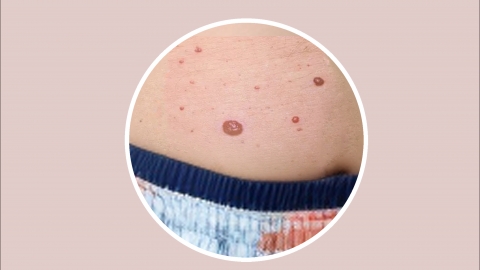What are the symptoms of hemangioma?
Generally, the symptoms of hemangiomas are mainly related to their location, size, and type. Common manifestations include localized color abnormalities, skin protrusion, color changes upon pressure, pain or discomfort, ulceration, and bleeding. The details are as follows:

1. Localized color abnormality: This is the most typical symptom of hemangiomas, with variations depending on the type. Infantile hemangiomas often appear as bright red or pink patches or nodules; cavernous hemangiomas typically present as purplish, bluish, or dark red lesions; superficial hemangiomas usually have uniform coloration and clear boundaries from surrounding skin.
2. Skin protrusion: Some hemangiomas manifest as raised areas on the skin surface, with a soft or moderately firm texture that may slightly deform when pressed. In infantile hemangiomas, the degree of elevation becomes more pronounced during the proliferative phase. Cavernous hemangiomas may form deep subcutaneous masses, with overlying skin appearing normal or slightly bluish.
3. Color change upon pressure: Superficial hemangiomas often fade significantly or temporarily lose color when pressed due to displacement of blood, then rapidly regain their original color once pressure is released. This characteristic helps differentiate hemangiomas from other skin lesions. Color changes upon pressure may be less obvious in deeper hemangiomas.
4. Pain or discomfort: Most hemangiomas are not painful, but those located near joints, in the oral cavity, pharynx, or other areas prone to friction or pressure may cause mild pain or discomfort due to rubbing or compression. Rapid growth of a hemangioma may also lead to dull ache or distension if it compresses surrounding tissues.
5. Ulceration and bleeding: Hemangiomas with thin surfaces—especially infantile hemangiomas—are prone to ulceration and bleeding following friction, trauma, or scratching. Wounds may heal slowly and can be accompanied by local redness, swelling, or crusting.
In daily life, it's important to protect the area affected by hemangioma, avoiding friction, scratching, or external impacts, and keeping the area clean and dry. For hemangiomas in areas prone to rubbing, wearing loose clothing can help reduce irritation. Regular monitoring for changes in symptoms is recommended to prevent aggravation caused by adverse factors.








